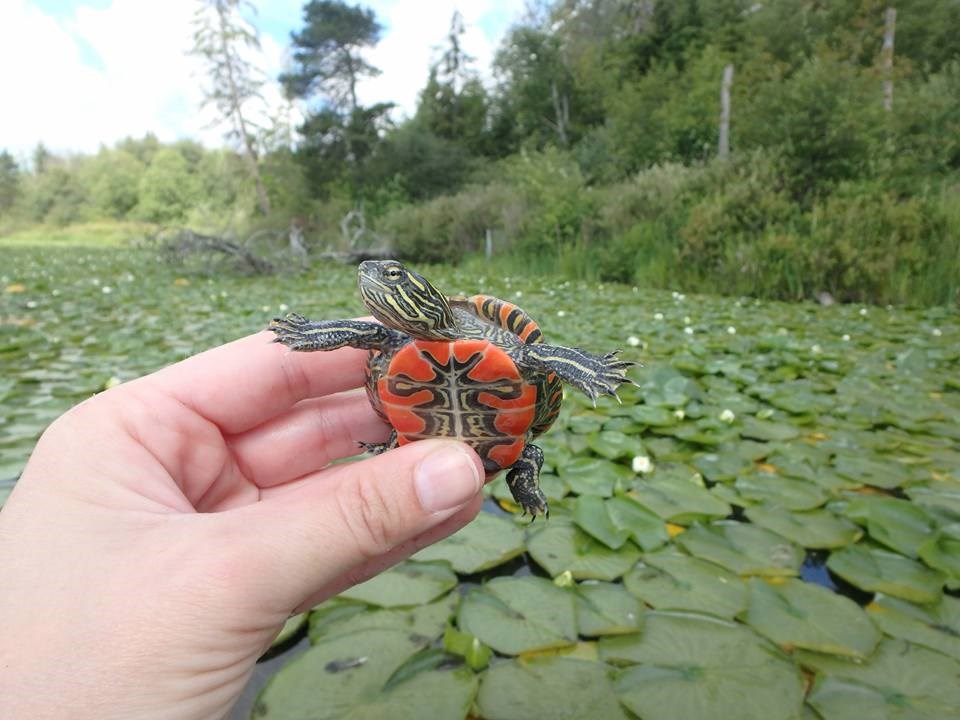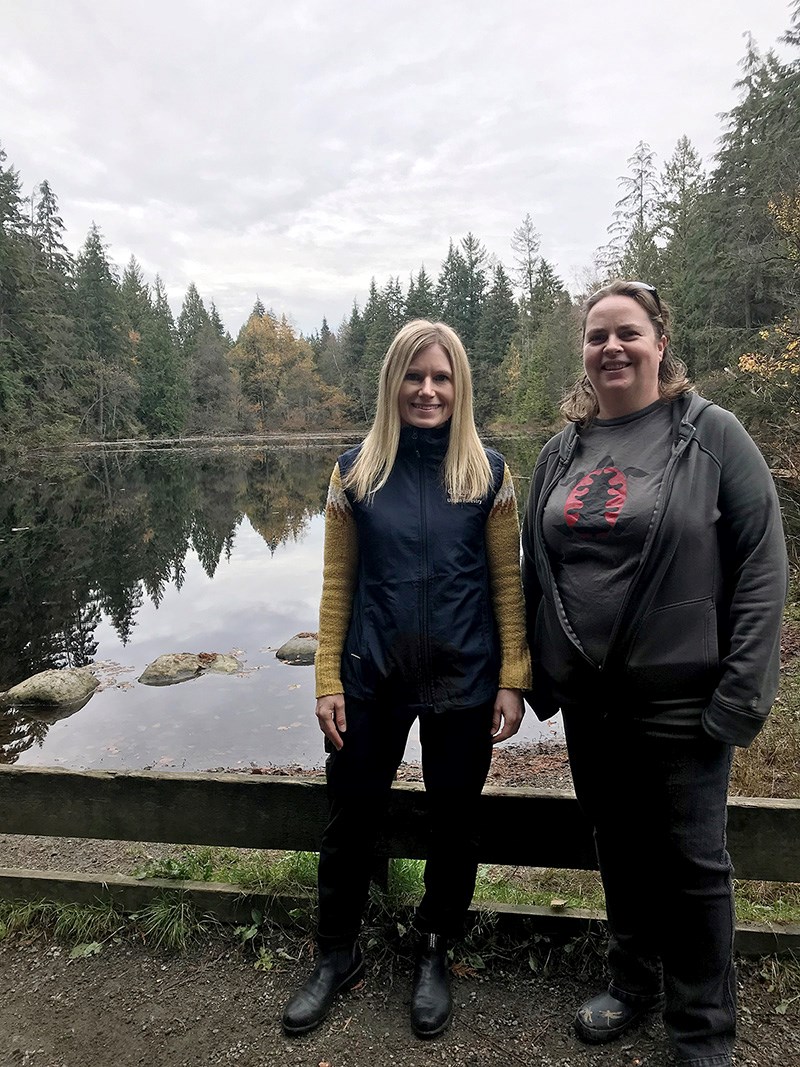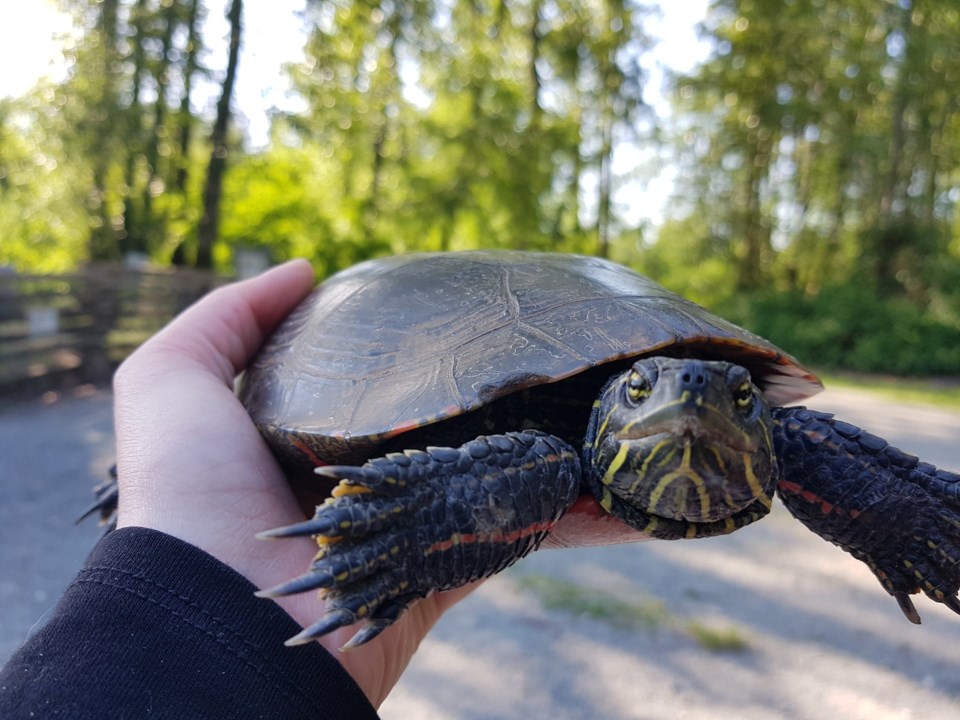In the far east end of Mundy Park, a small population of turtles is getting a leg up from the city of Coquitlam and the Coastal Partners in Conservation Society.
The organizations are building a nesting beach at the south end of Lost Lake for western painted turtles, the only native pond turtle left in B.C. and one that's known for its yellow and red stripes.
The groups' aim is to protect the eggs and hatchlings of the turtles after nesting season, which takes place between May and July, in order to boost their population.

Photo: Coastal Painted Turtle Project
For years, the number of western painted turtles has been on the decline at the lake — as well as at other coastal sites such as Minnekhada and Colony Farm regional parks in Coquitlam — due to humans and to animal predators such as herons, coyotes, raccoons and bullfrogs.
Pet turtles — usually red-eared sliders that are native to the southern U.S. and northern Mexico — also have been dumped at Lost Lake; they can pose a threat to the endangered species as they compete for food and spread disease.
Later this month, the city plans to install a split-rail fence around the nesting beach and, after nesting, society workers will plop wire cages over the nests to safeguard them.
Caresse Selk, Coquitlam’s urban forestry and parks services manager, said the society’s Coastal Painted Turtle Project is monitoring the site and the turtles, which are now moving from basking logs to a muddy place at the bottom of Lost Lake to hibernate for the winter.

Caresse Silk and Aimee Mitchell at Lost Lake in Mundy Park, Coquitlam. Photo by Janis Cleugh/The Tri-City News
When the temperature warms, she said, the female turtles will gravitate to the beach to lay their clutch (up to 18 eggs). Then, they’ll cover up their nest and wait of their eggs to break, around September, although most hatchlings will stay in their nests until the spring.
The survival rate is usually low, said biologist Aimee Mitchell, a manager with the project.
Still, she’s optimistic the population at Lost Lake will turn around, as it has at other locations — including Burnaby Lake and Nicomen Slough in Agassiz. (Project workers have also introduced some 400 juvenile and rescued turtles at Metro Vancouver and municipal parks.)
Funded by the city, Lehigh Hanson Inc. and the BC Hydro Fish and Wildlife Compensation Program, and supported by the Ministry of Forests, Lands and Natural Resources, the Lost Lake turtle nesting beach is part of Coquitlam’s Mundy Park Forest Management Plan.
Mitchell, who works with biologist Deanna MacTavish on assessment areas around the Lower Mainland, said they want to work with the park association and recruit volunteers next summer to patrol the beach and to educate visitors about the turtle program.
“It’s really important that we continue to protect the biodiversity of Mundy Park,” Selk said during a walk last week to Lost Lake. “It’s a unique and special place in our city.”



